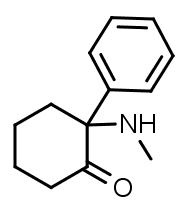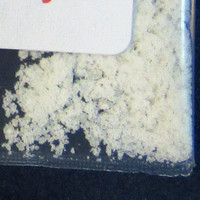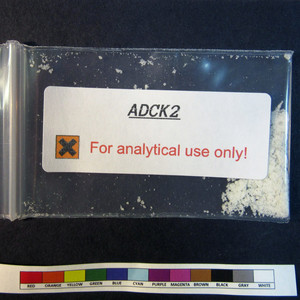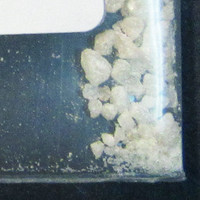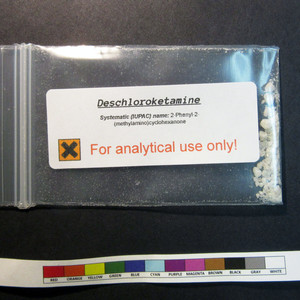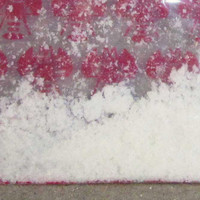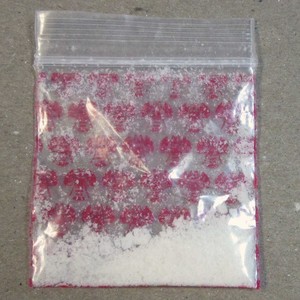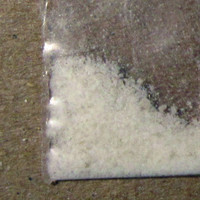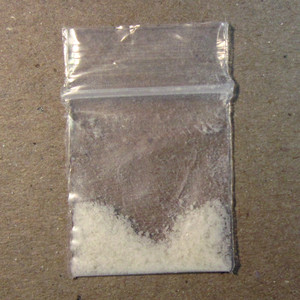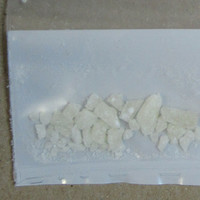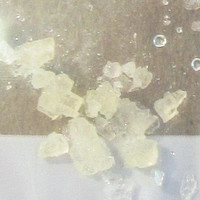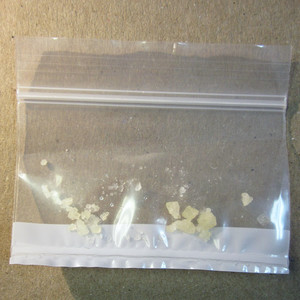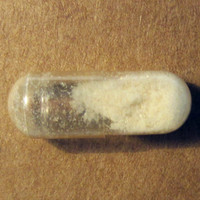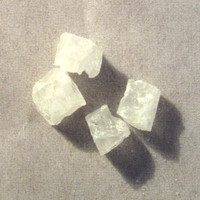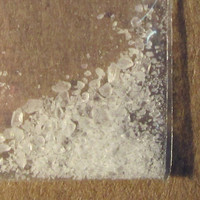Deschloroketamine is a dissociative research chemical in the arylcyclohexylamine class. It’s very close to ketamine with its structure and it’s closer to ketamine and MXE than to PCP-like dissociatives with its effects.
It might have some antimicrobial properties, but those have only been minimally investigated. If those properties are real, they may provide another reason to limit your frequency of exposure.
The drug is more potent than ketamine and lasts longer.
Deschloroketamine = AC1L935Y; DCK; 2′-Oxo-PCM; O-PCM; 2-Phenyl-2-(methylamino)cyclohexanone
PubChem: 437168
Molecular formula: C13H17NO
Molecular weight: 203.285 g/mol
IUPAC: 2-(methylamino)-2-phenylcyclohexan-1-one
Contents
Dose
Oral (tentative)
Light: 5 – 15 mg
Common: 15 – 30 mg
Strong: 30 – 50 mg
There are varying reports regarding the drug’s dosing. Some people find it’s most effective at 50 or 60+ mg, but it’s best to use lower doses, at least initially.
Intranasal (tentative)
Light: 5 – 15 mg
Common: 15 – 25 mg
Strong: 25 – 40 mg
Timeline
Oral (tentative)
Total: 4 -6 hours
Onset: 00:30 – 01:00
Intranasal (tentative)
Total: 3 – 6 hours
Onset: 00:05 – 00:15
Experience Reports
Effects
Positive
- Anxiolysis
- Dissociation
- Sedation
- Mood improvement
- Introspection
- CEVs and OEVs
- Physical euphoria
- Music enhancement
Negative
- Memory impairment
- Motor control impairment
- Nausea
- Dizziness
- Confusion
- Insomnia
- Drowsiness
Compared to other dissociatives, it’s typically placed between ketamine and PCP, but is often said to be closer to ketamine and MXE-like dissociatives. It lasts much longer than ketamine, which some people find is a negative quality.
It appears to typically offer relatively tame mental effects and a lower risk of mania than certain dissociatives.
People tend to either like the effects or find them boring. In the “boring” reports, users say it doesn’t offer much beyond basic dissociation and sedation. It’s pretty uncommon to have severely negative experiences.
Visuals
At common doses, blurriness, double vision, and seeing things as closer or farther away is common.
The CEVs at common doses can include colors and basic patterns.
Common doses
DCK offers a progressive detachment from your body in a dose-dependent manner. Initially, your limbs will feel different when moving and your ability to engage in fluid, quick movements is impaired. There may be a feeling of floatiness.
A general sedative effect is common, though not to the point of falling asleep at normal doses.
The feelings arising from your body can change. You may notice numbness, especially in your extremities, and tactile perception can be blunted. Another common element is a pleasurable feeling of warmth and fuzziness.
At least to a certain degree the effects are akin to non-drug psychological “dissociation.” This is a state in which the person feels less identified with their body and mental activity. They’re acting more as an “observer” than the subject.
It can be hard to think and maintain a normal thought stream, which can be quite impairing. This can lead to a meditative/calm mindset, with lower distractions both externally and internally. Some people find it’s quite a lucid experience, but there are also reports of confusion and major cognitive impairment that leaves people feeling unintelligent for hours.
DCK sometimes offers a psychedelic-like feeling of profoundness and importance, but this isn’t the most typical response.
Difficulty speaking and otherwise communicating is fairly common.
Common+ doses
With a sufficient level of dissociation, a sedated and highly disconnected state can arise, often featuring more notable CEVs and OEVs. The OEVs can include somewhat psychedelic-like visuals, such as morphing and melting.
Internally, people can enter states where they’re mostly or entirely oblivious to the outside world. During this time they may experience dream-like sequences or hallucinatory landscapes/environments. Sometimes people even have dream-like scenarios that play out with eyes open.
While these “hole” experiences have been reported with DCK, they might be harder to reach vs. with ketamine.
There can be significant time distortion, especially during a “hole” experience. The “hole,” when obtained, is sometimes described as MXE-like. It can include colors and various dream-like worlds.
Memory is often impaired, so even remembering the entire experience or the hole is difficult.
Your body can feel like it’s distorting, typically in a pleasurable/interesting way.
After effects
Some people report depression or cognitive impairment for up to a day after the experience is over. But, like with other dissociatives, antidepressant effects are sometimes noted for a week or so.
Chemistry & Pharmacology
Chemistry
Deschloroketamine is in the arylcyclohexylamine class. It only differs from ketamine in that a chlorine substitution has been removed.
Pharmacology
Though we lack pharmacology studies, it almost certainly operates as an NMDA antagonist. Other potential mechanisms have yet to be elucidated.
Antimicrobial
A couple patents from the same group in Germany (Detlef Preiss and Akos Tatar) outlined the alleged antimicrobial properties of DCK. Those patents were published around the year 2000 and nothing else has happened with the info since then. No further research has been conducted to formally test DCK’s antimicrobial properties.
Because the burden of proof for patents is low, properties described within them shouldn’t be taken as fact.
There’s also some evidence that ketamine has antimicrobial properties as well, though it’s not clear if they’re present at concentrations relevant to humans.
Patents
Patent 6083992
- From: Detlef Preiss and Akos Tatar
- Found DCK was “effective against a number of bacterial diseases.”
- Patient
- Bad state of health; HIV-infected for over 10 years
- Suffering from unspecified mycoplasmal infection and perimyocarditis as well as neuropathy
- Given 2 mg DCK twice per week for 6 weeks
- Condition improved significantly; gained weight and had no other infections
- Then repeat attack of infections after 9 months, including Plaut’s angina, candidiasis, cytomegalic disease, and lip herpes.
- Again given 2 mg DCK twice per week
- Recovered completely from all infections during the therapy course.
- Claim:
- 1 – A method of treating a patient having a bacterial infection using DCK or its physiologically tolerable salts.
- 2 – A method of treating a patient where the infection is a mycoplasmal infection.
Patent 5811464
- From: Detlef Preiss and Akos Tatar
- Found DCK “is effective in a great number of bacterial, fungal, virus and protozoan diseases, and in immunomodulation.”
- Examples
- 1 – Toxoplasmosis
- Patient showed multifocal toxoplasmosis on CT scan
- Given 2 mg DCK twice a week for 8 weeks; then no medication for 4 weeks; then same DCK regimen for 2 weeks
- General condition improved noticeably within 1 month
- Foci of toxoplasmosis showed major improvement after treatment; indicating clear or even complete regression of the foci.
- 2 – Cytomegalovirus diseases
- Patient with fever
- Generalized swelling of a lymph node and CMB-related conjunctivitis (serum test)
- Given 2 mg DCK on first, third, fourth, and fifth day
- Patient free from fever on 3rd day, swelling in lymph node gone on 4th day, and conjunctivitis gone from 6th day.
- Patient returned to a good state of health.
- 3 – Various herpetic infections
- Various groups with lip herpes, genital herpes, herpes zoster, and herpes simplex
- Given 2 mg DCK daily for 4-5 days
- Diseases cured more rapidly to a statistically significant degree in those with treatment.
- 4 – Treatment of HIV diseases
- Same case as from the Patent 6083992
- 1 – Toxoplasmosis
- Claim:
- Method of treating immunovirus caused disease, namely, AIDS or ARC, and for the modulation of the immune responses of said patient
- Method of treating herpetic infections
History
1966
A patent from Calvin Stevens at Parke-Davis in Michigan described the preparation of deschloroketamine.
1998 – 2000
A couple patents from a group in Germany were published. They described the alleged antimicrobial properties of the substance.
DCK was allegedly capable of significantly benefiting people suffering from bacterial and other kinds of infections.
2015
The EMCDDA received its first report of DCK’s presence through the EU’s Early Warning System. The report came from the UK in March 2015.
2015 onward
Most experience reports have appeared online post-2015.
2015 – 2016
(Frison, 2016) – Reported on the analysis of seized drugs in Italy. 102 envelopes (31 green, 20 pink, and 51 blue) were said to contain ketamine in powder form. Upon analysis, it was determined all of the green and blue envelopes were deschloroketamine, while the pink envelopes were methoxetamine.
2016
(Hout, 2016) – Showed the presence of DCK on AlphaBay and Valhalla, two dark net markets, during the second quarter of 2016.
2016
(Head, 2017) – Based on data from the DEA’s laboratory system, DCK was seized at least 8 times in the US during 2016.
Legal Status
US (as of July 2017)
Uncontrolled
Other (list may not be complete)
Controlled in Canada (general ban), Latvia, and the UK (general ban).
Safety
The safety of deschloroketamine isn’t known, largely due to it being a research chemical. It’s best to use common doses, infrequently, and without combinations.
Overdose
Using too much can result in unconsciousness, which comes with risks like vomit aspiration. The impaired, sedated state it provides can also be dangerous due to the potential for falls and other accidents.
Urinary tract
It could come with some of the same chronic use concerns as ketamine, meaning problems along the urinary tract that result in pain, increased urinary frequency, and other issues. Avoiding daily or near daily high-dose use can effectively prevent these potential effects.
Psychological
Some people find they’re more depressed and prone to emotional fluctuation after using dissociatives like DCK. If you notice this, it’s best to avoid the drug.
Acutely, it could also raise the chance of mania and hypomania, along with confusion.
Antimicrobial
Though these properties could potentially exist, they don’t appear to be a major concern with reasonable levels of low-frequency use. Among the possible chronic use concerns would be a disruption of the gut microbiome, but we don’t even know how real the antimicrobial properties are.
Risky combinations (list may not be complete)
- Other depressants, including ethanol, benzodiazepines, and opioids.
- MAOIs
- Tramadol
Test Results
References
(2016) EMCDDA–Europol 2015 Annual Report on the implementation of Council Decision 2005/387/JHA
(2000) Use of 2-methylamino-2-phenylcyclohexanone for the treatment of bacterial infections
(2000) Use of 2-methylamino-2-phenylcyclohexanone for the treatment of protozoan infections










